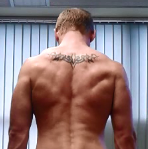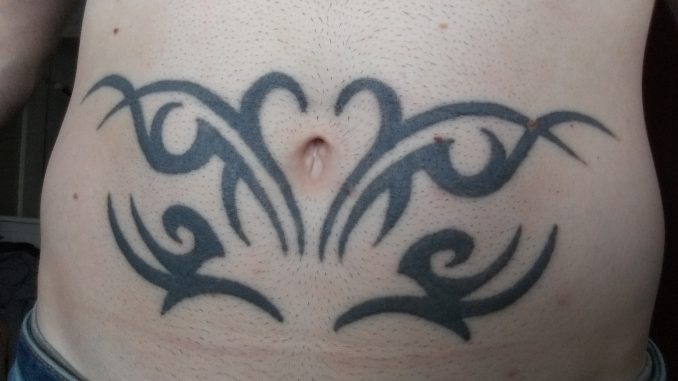
In July 2019 I started the process of removing a tribal tattoo which I’ve had on my stomach since I was 17. This article documents the time (2.5 years), money (£1500) and pain (12 treatments) that has been invested in my tattoo removal.
The Tattoo
The tattoo I chose to remove is a tribal design, almost certainly meant as a “tramp stamp”. That is to say, it’s a tattoo that women usually choose to have on their lower back.
Why did I get it in the first place? A few months earlier I got a tribal design across my upper back, and I found myself frustrated that I couldn’t see it unless I twisted around in front of a mirror. The solution? Get one on my stomach.
I wanted body symmetry, which ruled out getting one on an arm or a leg. I shave before taking progress pictures, otherwise you’d see that I’m too hairy to suit a chest piece. The original design was much smaller, but after 10 years I looked into tattoo removal treatments. Faced with the high costs and lengthy process, I instead opted to modify the design in the hopes that I’d like it more. I did not.

Test Patch
Date: July 2019
This is a non-negotiable part of laser tattoo removal. It usually takes place at the end of the consultation, assuming you’ve agreed to undergo treatments, and involves a few small “zaps” with the laser. This is because some people will have a negative reaction and so wouldn’t be able to have a full treatment.
I’m based near London so the clinic I chose was the Sk:n Clinic in Holborn. They were doing a summer offer involving a block of 8 sessions for £825. I was charged an extra £50 for the initial consultation and test patch, and £44.50 for some post-treatment recovery products. These included Cu3 intensive moisturiser for skin repair and a Thermal Spring Water to reduce itching.
Session 1
Date: 14th August 2019
This was one of the most painful sessions I had to endure. In later sessions I learned to take paracetamol 2 hours before treatment but this one was done unmedicated. The exact machine they used was called Asclepion TattooStar Effect, which uses Q-switched lasers. I shaved the area around 24 hours beforehand, which the clinician said saves her doing it herself. She cleansed the area and worked her way around the design in about 10-12 minutes, pausing regularly to ensure I could handle the pain. She then applied a thick coating of aloe vera gel and put a large bandage on it, advising me to remove it after 24 hours.
I would clean it gently in the morning, applying the thermal water spray and patting it dry with a towel a few minutes later. Every few hours I would then apply the Cu3 intensive moisturiser to avoid letting it dry out. It took 8 days for the blisters to appear which is very unusual. Beyond that it was 4-5 days of blisters, 7-8 days of dry skin and scabs, and it healed fully on day 23.
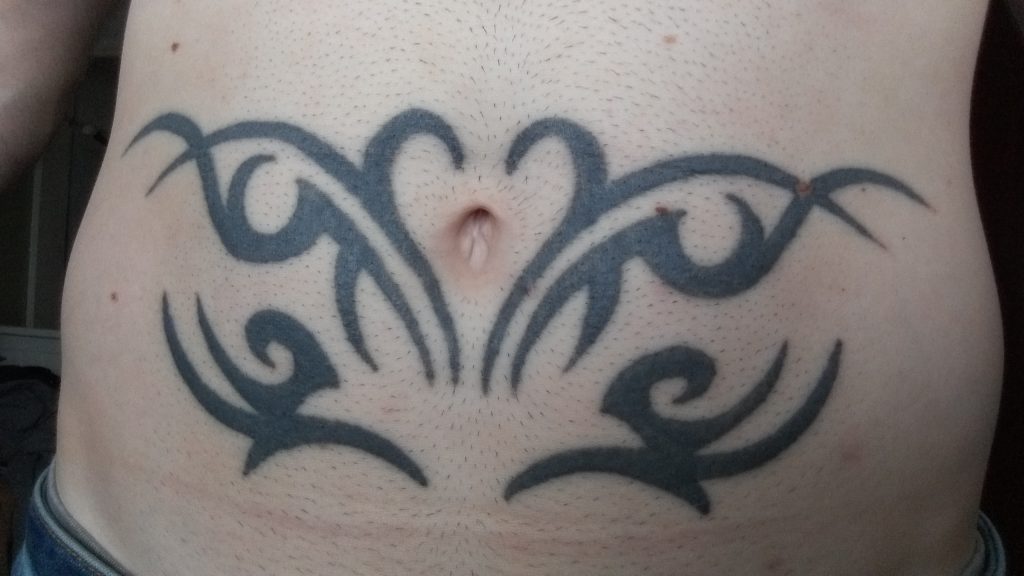
Sessions 2-4
Dates: 24th September 2019, 20th November 2019 and 16th January 2020
These sessions hurt less, thanks to my paracetamol taken 2 hours before the treatment. The recovery was faster too, a total of 12-14 days for each with the first half as blisters and the second as dry skin and scabs. I kept up the same protocol as before, also introducing sun lotion in the five days after it healed. This was due to advice I found on a website which said that regardless of sun exposure, sun lotion helps with the removal process.
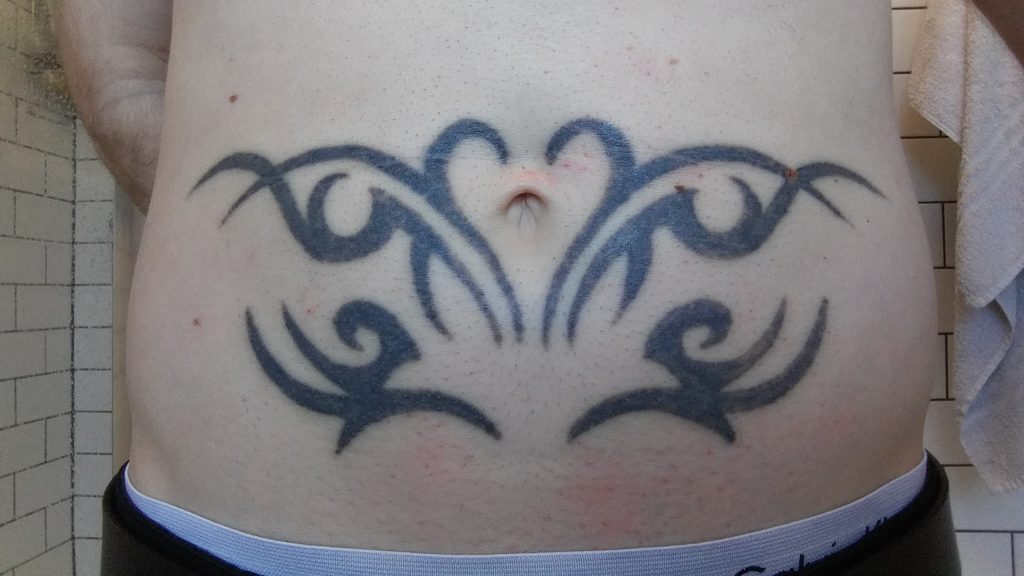
I was fully warned that I would see little to no difference until the 4th session. Leading up to session 5 was when I started to see cracks appearing in the ink. There was also enough fading in some areas that I could see the skin underneath.
A new laser
After the 4th session I was told that the clinic was upgrading to a new Picoway laser. The Pico range is known to be a far more effective (but more costly) tattoo removal tool. Having already purchased the block of 8 sessions, they agreed to use the more advanced laser on me at no extra cost. Personally I found the difference to be night and day. I had envisioned spending years using the Q-switched laser and not seeing much progress. In contrast, the first one with the Picoway had a large amount of fading and left me feeling very optimistic.
Sessions 5-8
Dates: 12th March 2020, 11th July 2020, 12th September 2020 and 14th November 2020
If you’ve read the dates you’ll notice that the time between sessions 5 and 6 was 4 months, with the others separated by the standard 8 week gap. This was due to the pandemic, and it led me the discovery that the tattoo continues to fade for up to 6 months after a treatment. The reason they advise 8 weeks is so that the tattoo removal process is finished as soon as possible. However, if money is a concern, it’s much more cost effective to space the treatments out with 4-5 months gaps. My 6th session was rescheduled at short notice, so I’d already shaved my stomach and taken the ‘before session six’ picture. That allowed me to make a direct comparison to the picture I took before the newly scheduled session, which you can see below.
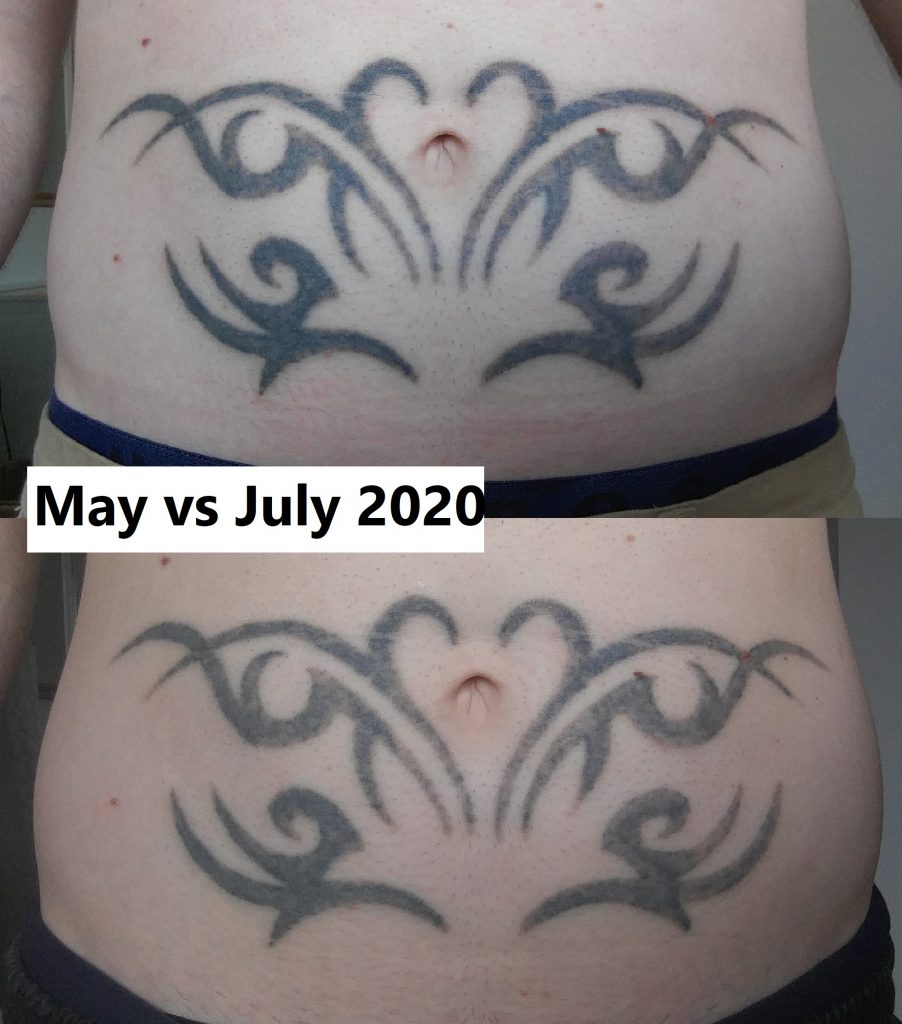
Beyond this revelation the sessions were otherwise straightforward. I opted to return to the 8 week timeframe for sessions 7 and 8. After session 8 I was at the end of my pre-purchased block of sessions. The clinician suggested I take six months off to allow the ink to fade further before continuing treatment. The plan was for her to quote me based on her estimate of the number of remaining sessions I’d need. However, that never materialised as I moved house in December 2020.
Sessions 9 & 10
Dates: 22nd April 2021 & 20th October 2021
My nearest clinic following the move was in rtwskin in Royal Tunbridge Wells. They agreed to give me a reduced rate of £150 given what I’d been paying up until now. They use a Q-switch laser, though I was reassured there should still be a clear reduction in ink levels with each treatment. I was abroad over summer and then moved from the halfway house to my new home in September. That meant there was a large gap between sessions 9 and 10.
You can see in the video that I had to get a second test patch, though this time they only waited 48 hours before booking me in for the full session. This was the first session to include “cool air”, a tube blowing very cold air to immediately cool the skin. The pain for these treatments was down at a 3 or 4 out of 10 and it seemed more professional. It feels like both clinics I chose are more suited to beauty treatments and they happened to invest in a tattoo removal machine.
She said the bandage should be removed within the hour to allow air to get at it, and was concerned that the Sk:n Clinic were telling me to wait 24 hours. What can happen in that time is the broken skin can heal to the bandage, and that’s something I experienced.

At this point there was significant fading and the treatment itself was quite bloody. For both these sessions I found the redness took longer to fade and healing was closer to 18-21 days. You can also see the raised skin that was a relatively new reaction after the latest sessions.
Session 11
Date: 7th January 2022
With each treatment the power of the laser needs to be increased in order to further break down the particles of ink. In session 10 the laser was very close to maximum capacity. I had the feeling she was deliberately avoiding the top setting so that I could have one further treatment with them. The reaction in session 11 was so poor that my skin healed in three days, and I ultimately complained and was given a full refund.
Session 12
Date: 22nd March 2022
Having exhausted the ability of a Q-switch to remove the ink, I sought my nearest Pico laser. I found a Picosure in London through the website tattoo removal experts and got in touch. He was confident that the laser could fade my tattoo further and quoted me £150. That took my total investment to around £1415, including the purchase of additional lotions and healing creams up to this point.
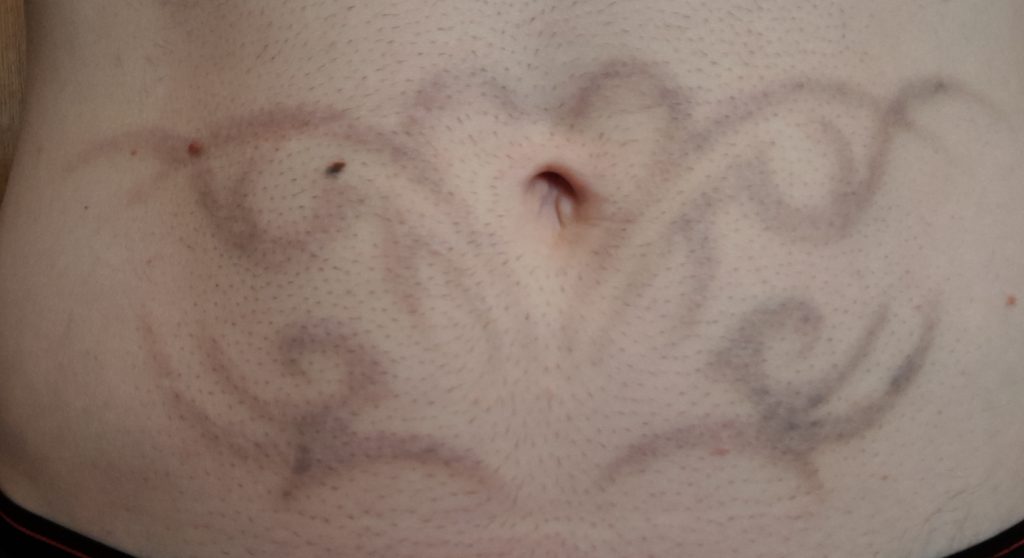
The picture is before session 11 which unsurprisingly is how it looked before session 12. I found yet another protocol involving no post-treatment bandage though the layer of aloe vera gel was included. He mentioned that most clinics buy a laser and follow whatever the instruction manual says for post-treatment, which varies by manufacturer. To get the right reaction from the ink he needed to set the Picosure close to max., meaning that this is about as far as laser tattoo removal can take me.
The Final Outcome
At the outset of treatment I would have considered anything other than 100% removal a failure. Having endured 12 sessions and the respective recoveries I’m closer to considering this a success. Allowing my natural hair growth to return has helped mask the tattoo, and while the design is visible it’s far less prominent. It’s only by revisiting what it looked like before session 1 that I can appreciate how much ink has been removed.
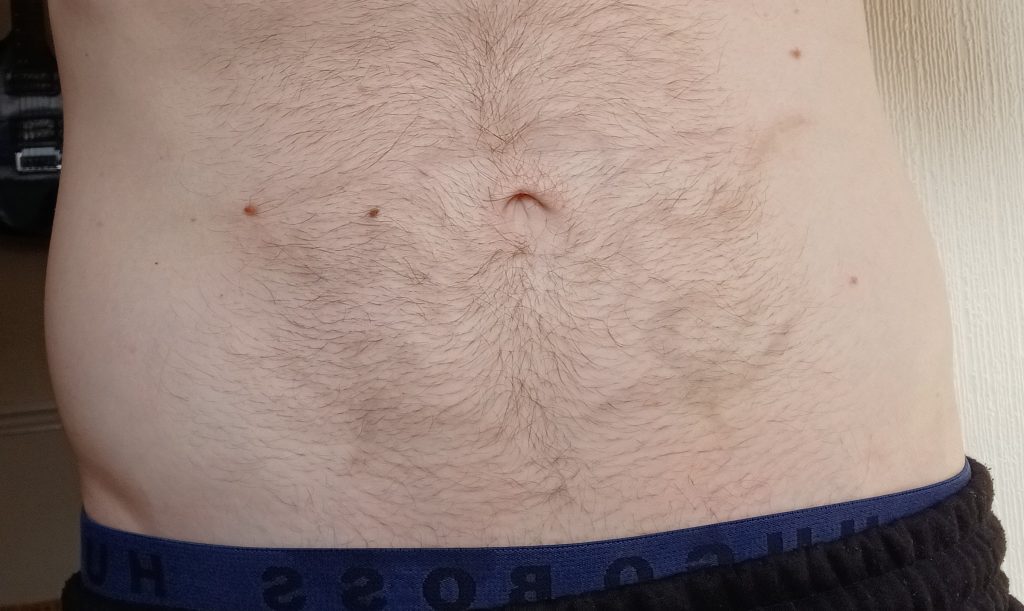
Overall I’m relatively happy with my results and I’d recommend laser tattoo removal to others. There’s minimal scarring and it’s given me a lot more confidence to have my top off. I would urge people to seek a Pico laser as the Q-switch didn’t seem as effective. Best of luck to anyone currently going through or planning to go through the process!

